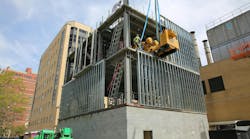The plant relies heavily on its compressed air system. Over the past year, incidents of low air pressure have increased in frequency. The new plant engineer made solving this problem one of her top priorities upon taking the job three months ago. She hired a contractor to ultrasonically detect leaks and then repair them. They found over 1,500 leaks, a clear indication this system had not been adequately maintained.
Fixing the leaks reduced the frequency of those pressure outages, but they still happen. An analysis of compressor capacity versus utilization showed the system is correctly sized for the load.
She wonders if the compressors just are not compressing enough air, and she wants you to troubleshoot from the electrical side. What might you look at?
The plant engineer may be thinking electrical issues can cause the motor to slow down, but motor speed is determined the number of poles in the motor. Possibly, thermal protection is causing compressor motors to go offline temporarily; look at how the motors are thermally protected. Also, check:
- Variable speed drives. A wrong setting on one of several compressor motors may be the only problem.
- Control system. Run through the complete set of maintenance and troubleshooting step
And of course, you don’t want to lose a motor. Check for these issues:
- Supply issues, such as low power factor, waveform distortion, and voltage imbalance.
- Excess vibration.
- Impending bearing problems (use ultrasonic detection).




